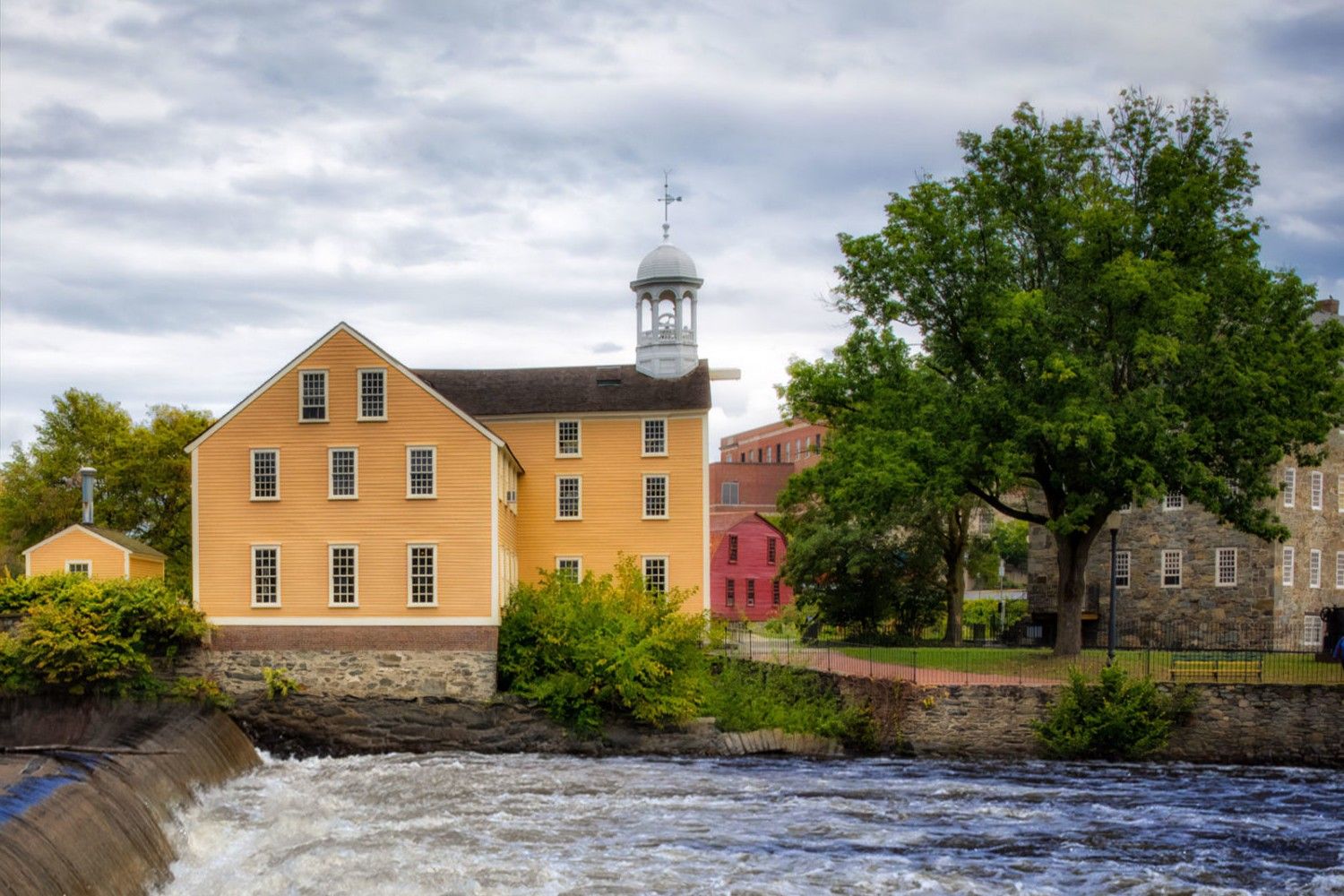Hidden Colonial Mills Of Rhode Island

Rhode Island, known for its stunning coastline, also hides a rich history in its colonial mills. These mills, once the heartbeat of local communities, played a crucial role in America's industrial revolution. Imagine walking through lush forests and stumbling upon an old stone structure, hearing the faint echo of water wheels turning. These hidden gems offer a glimpse into the past, showcasing the ingenuity and hard work of early settlers. Whether you're a history buff or just love exploring off-the-beaten-path locations, Rhode Island's colonial mills provide a fascinating journey back in time. Ready to uncover these historical treasures? Let's dive in!
Hidden Colonial Mills of Rhode Island
Rhode Island, the smallest state in the U.S., holds a rich history dating back to the colonial era. Among its treasures are the hidden colonial mills that once powered the economy. These mills, often tucked away in scenic spots, offer a glimpse into the past. Let's explore some of these fascinating sites.
1. Slater Mill
Located in Pawtucket, Slater Mill is often considered the birthplace of the American Industrial Revolution. This mill, built in 1793, was the first successful cotton-spinning factory in the U.S. Today, it serves as a museum where visitors can learn about early industrialization.
2. Gilbert Stuart Birthplace and Museum
In Saunderstown, the Gilbert Stuart Birthplace and Museum offers more than just a glimpse into the life of the famous portrait artist. The site includes a working snuff mill, which dates back to the 1750s. Visitors can see how water power was harnessed to grind tobacco into snuff.
3. Kenyon's Grist Mill
Kenyon's Grist Mill in South Kingstown has been grinding grains since 1696. This mill, still in operation, uses the original granite millstones to produce cornmeal, flours, and mixes. A visit here offers a taste of history—literally.
4. Shady Lea Mill
Nestled in North Kingstown, Shady Lea Mill dates back to the early 1800s. Originally a textile mill, it now houses artists and craftsmen. The mill’s rustic charm and creative atmosphere make it a unique spot to explore.
5. Harris Mill
Harris Mill in Coventry, built in 1850, was a significant player in the textile industry. The mill complex has been repurposed into residential lofts, but its historical architecture remains intact. Walking through the area feels like stepping back in time.
6. Hope Mill
Hope Mill, located in Scituate, was established in 1806. This mill specialized in producing cotton yarn and played a crucial role in the local economy. Though no longer operational, the mill building stands as a testament to Rhode Island's industrial heritage.
7. Lippitt Mill
In West Warwick, Lippitt Mill is one of the oldest textile mills in the state, dating back to 1809. The mill produced cotton and woolen goods for over a century. Today, it is a historic landmark, offering a window into the past.
8. Usquepaug Mill
Usquepaug Mill in Charlestown has a history stretching back to the 1700s. This grist mill, powered by the Queen's River, produced flour and meal for the local community. The mill's picturesque setting makes it a charming spot to visit.
9. Almy Mill
Located in Tiverton, Almy Mill was built in the early 1800s. This mill processed wool and cotton, contributing to the region's textile industry. Though the mill is no longer in use, its structure remains a historical gem.
10. Pontiac Mills
Pontiac Mills in Warwick played a pivotal role in the textile industry during the 19th century. The mill complex has been transformed into a mixed-use development, but its historical significance is preserved. Exploring the area reveals the industrial roots of Rhode Island.
11. Arkwright Mill
In Cranston, Arkwright Mill was established in 1810 and became a major textile producer. The mill complex has been repurposed, but its historical essence lingers. Walking through the site offers a sense of the industrial past.
12. Phenix Mill
Phenix Mill in West Warwick, built in 1810, was a key player in the textile industry. The mill produced various fabrics and contributed to the local economy. Though no longer operational, the mill building stands as a historical landmark.
13. Valley Falls Mill
Valley Falls Mill in Cumberland dates back to the early 1800s. This mill was involved in textile production and played a significant role in the community. The mill's remnants offer a glimpse into Rhode Island's industrial history.
14. Manville Mill
Manville Mill in Lincoln was established in the early 1800s and became a major textile producer. The mill complex has been repurposed, but its historical architecture remains. Exploring the area provides insight into the state's industrial past.
15. Saylesville Mill
Saylesville Mill in Lincoln, built in the mid-1800s, was a significant textile producer. The mill complex has been transformed into residential units, but its historical charm endures. Walking through the site offers a sense of the past.
Rhode Island's Timeless Treasures
Rhode Island's colonial mills offer a unique glimpse into the past. These historic sites are more than just old buildings; they tell stories of innovation, hard work, and community. Visiting these mills, you can almost hear the hum of machinery and feel the energy of a bygone era. Each mill has its own charm, from the rustic beauty of Slater Mill to the serene surroundings of Gilbert Stuart Birthplace. Exploring these sites, you’ll appreciate the craftsmanship and ingenuity that shaped early American industry. Whether you’re a history buff or just looking for a peaceful day trip, Rhode Island’s colonial mills are worth the visit. They remind us of the importance of preserving our heritage and the stories that come with it. So next time you’re in Rhode Island, take a step back in time and discover these hidden gems.

